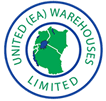We are thrilled to announce that we have once again passed a rigorous inspection and we’ve received our ISO 9001:2015 certification! This new standard replaces our previous ISO 9001:2008 certification and is effective immediately. Please feel free to view or download our certificate of registration [PDF].
The ISO 9001:2015 standard demands a higher degree of leadership commitment than the previous standards. We are dedicated to constant improvement and development and achieving and maintaining an ISO 9001 accreditation, ensures we have the processes and systems in place for this.
The biggest change to the standard is the new core concept of risk-based thinking. While this has always been part of the standard, the new version gives it increased prominence. In short, risk-based thinking is used to prioritize processes and drive improvement. This focus is intended to prevent undesirable outcomes such as nonconforming products and services.
What is the difference between ISO 9001:2015 and ISO 9001:2008?
- Identify both external and internal issues. The new ISO 9001 standard now requires organizations to identify all issues both within and outside the organization that are relevant to its context and that can help to achieve the intended outcomes of its management system
- Greater emphasis on leadership than management. ISO 9001:2015 certification requires management to have direct involvement and ownership of the process and to ensure that the QMS is achieving its intended results and drive continual improvement within the organization
- Focus on organizational planning. This is a new requirement which obliges organizations to identify those risks and opportunities that have the potential to impact (negatively or positively) on the operation and performance of their QMS
- Evaluation of resources. Organizations need to take into account both internal and external resource requirements and capabilities to implement, maintain and improve its QMS
- Open-communication with customers. There is now a requirement that these processes must include, where relevant, communicating with customers in relation to the handling or treatment of customer property and specific requirements for contingency actions
- Identifies the ‘what’ ‘how’ and ‘when’ of the monitoring and measurement. ISO 9001:2015 certification now requires organizations to monitor information relating to the degree to which their needs and expectations have been fulfilled
- Improvement. An additional requirement for organizations to address is the ‘consequences’ of nonconformities, which is recognition that not all of its processes and/or activities will represent the same level of risk in terms of the organization’s ability to meet its objectives.
ISO 9001:2015 brings a number of other benefits as well, including putting greater emphasis on leadership engagement, addressing supply chain management more effectively, and using simplified language and a common structure and terms. Overall, these changes are intended to allow organizations to focus less on documentation and more on managing processes.
One other change of note is that the new ISO 9001:2015 has seven quality management principles compared to the eight principles of our previous certification:
- Customer focus
- Leadership
- Engagement of people
- Process approach
- Improvement
- Evidence-based decision making
- Relationship management











